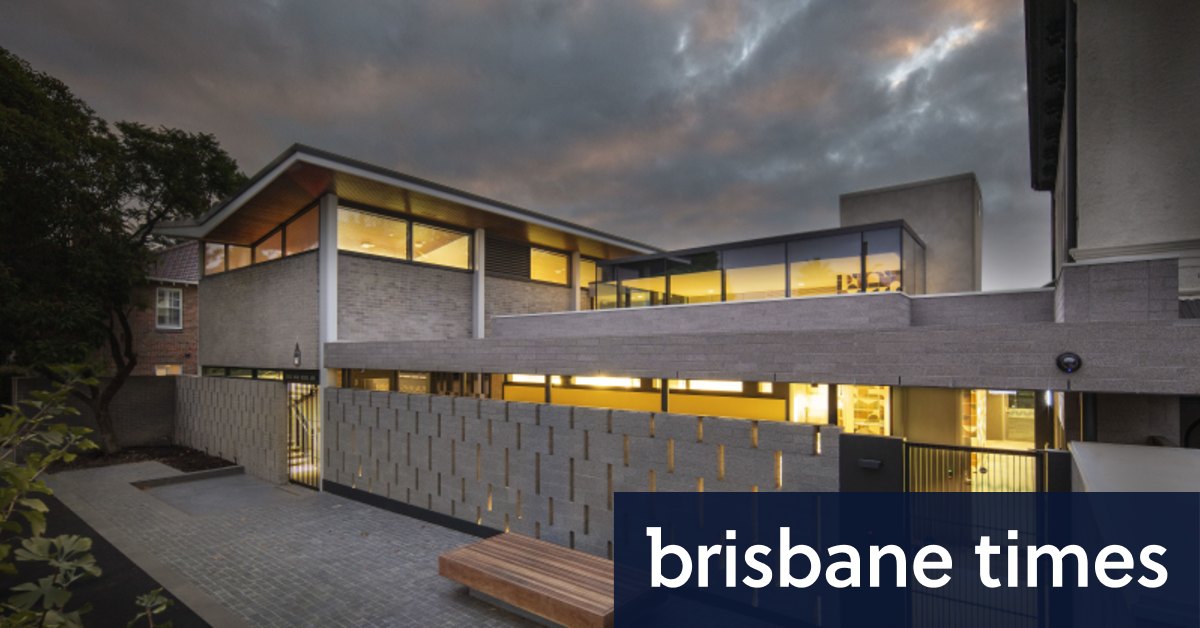Many are familiar with the distinctive concrete block building of Mockridge Stahe & Mitchell’s Myer School of Music, with its butterfly-shaped roof (a contrast to the other sloping rooflines of the streetscape).
Although in fairly good condition, including the original graphic tiles at the entrance, the recital rooms needed an update, with greater acoustic measures, for example.
One of the delightful features of the early 1960s building is the concrete cinder block fence that provides a glimpse beyond. What was once a rear garden is now a split-level wing that opens onto the existing buildings on either side.
New bridges/walkways connect on one side, and on the other, access is through original Victorian decorative plaster arches.
The seamless connection between the two is a similarly styled concrete block breezeway/fence, with the forecourt adjoining the sidewalk with corbelled bluestone and a simple Japanese wooden bench (reminiscent of the early 1960s).
Elliott also aligned the concrete fascia of this new wing with the veranda of the Victorian house to further “cement” this unison.
A double-height void in the reception area hints at the spaces found in the buildings on either side.Credit:John Gollings
But it’s only beyond that threshold that the contemporary design unfolds, including plywood walls and an elevator core finished with graphic tiles in shades of brown, charcoal and cream, evoking the early 1960s, but clearly moving to the present.
A double-height void in the reception area hints at the spaces found in the buildings on either side.
Elliott has also used the latest materials, such as studded rubber flooring to both improve acoustics and provide a soft, tactile floor underfoot.
“Most rooms have been double or triple glazed,” says Elliott, who also included air conditioning built into the perforated wooden walls to ensure doors could stay closed during practice hours.
The Mockridge Stahle & Mitchell wing now has a sophisticated studio/recording office.
As the number of recital rooms required by Melbourne Grammar School was considerably greater than the size of the former rear garden, Elliott dug below ground level to create two generous and equally separate, larger recital spaces.
Here, you’ll find fluted plywood walls reminiscent of neighboring curtains, as well as fabric-covered walls that further insulate these studio apartments.
And what could be more soundproof than “burying” these two studios below ground level, without any noise from passers-by.
Loading
For Elliott, this project was seen as a “companion” architecture to those buildings on the corner housing estate.
“I was extremely mindful of the new wing’s relationship to the street, opting for a softer approach.”
And locals can easily be forgiven for missing out, even though it’s a delightful, if recessive, addition to the streetscape.

